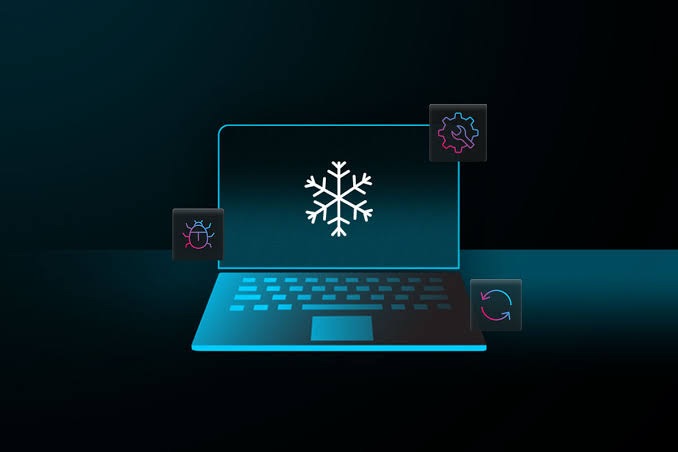How to Fix Laptop Freezing in Windows 10/11: A Complete Step-by-Step Guide
Is your Windows 10 or Windows 11 laptop constantly freezing, lagging, or becoming unresponsive? You’re not alone. Laptop freezing is a common issue faced by many users, often caused by software glitches, outdated drivers, or hardware limitations. In this guide, we’ll show you how to fix a laptop that keeps freezing on Windows 10/11 with effective step-by-step solutions.

Quick Tip: Regular system maintenance and keeping your software up-to-date can significantly reduce freezing issues.
Common Reasons Why Your Laptop Freezes
Before diving into the solutions, let’s explore the typical causes of freezing on Windows laptops:
Too many background processes Low disk space or memory (RAM) Corrupt system files Outdated or incompatible drivers Malware or virus infection Faulty hardware (like hard drives or RAM)
How to Fix Laptop Freezing in Windows 10/11
1. Restart Your Laptop
Sometimes, a simple reboot is enough to clear temporary glitches and memory overload.
Steps:
Press Ctrl + Alt + Delete Select the Power icon → Click Restart
2. Run a Full System Scan for Malware
Viruses and malware can hog system resources, leading to freezing.
Steps:
Open Windows Security Click Virus & threat protection Click Quick scan or Full scan
3. Disable Startup Programs
Too many apps running at startup can slow down your system.
Steps:
Press Ctrl + Shift + Esc to open Task Manager Go to Startup tab Disable unnecessary programs
4. Update Windows and Drivers
Outdated drivers and system software can cause compatibility issues and freezing.
Steps:
Go to Settings → Update & Security → Windows Update Click Check for updates
Also, update drivers:
Right-click Start → Device Manager Right-click on a device (e.g., Display Adapters) → Update driver
5. Free Up Disk Space
A full hard drive can drastically slow your laptop and cause it to freeze.
Steps:
Open Settings → System → Storage Use Storage Sense to delete temporary files and unused apps
You can also use Disk Cleanup:
Type Disk Cleanup in the Start menu Select drive and delete unnecessary files
6. Run System File Checker (SFC)
Corrupted system files may be the root cause of the freezing.
Steps:
Search Command Prompt, right-click and select Run as administrator Type: sfc /scannow → Press Enter Let Windows repair any damaged system files
7. Check RAM and Hardware Health
Faulty RAM or HDD/SSD can also cause freezing.
Steps:
Type mdsched.exe in Start → Run Windows Memory Diagnostic Restart and let it scan your memory For hard drives, use: chkdsk /f /r command in Command Prompt (admin)
8. Perform a Clean Boot
A clean boot helps you diagnose if background services are causing the issue.
Steps:
Press Windows + R, type msconfig Under Services, check Hide all Microsoft services, then click Disable all Go to Startup tab → Open Task Manager → Disable all startup items Restart your PC
9. Reset Windows (if all else fails)
If the issue persists, resetting Windows can help restore stability.
Steps:
Go to Settings → Update & Security → Recovery Click Reset this PC → Choose Keep my files or Remove everything
Backup important data before resetting!
✅Bonus Tips to Prevent Freezing in Future
Use an SSD instead of HDD for better performance Keep fewer browser tabs open Don’t overload your laptop with unnecessary software Keep drivers and system up-to-date regularly Clean dust from vents to prevent overheating
Fixing a laptop that freezes in Windows 10/11 may require trying several solutions. Start with basic fixes like updating drivers and cleaning up startup apps, and escalate to advanced tools like SFC or a full reset if necessary. By keeping your laptop optimized, you’ll enjoy a smoother, more productive experience.
